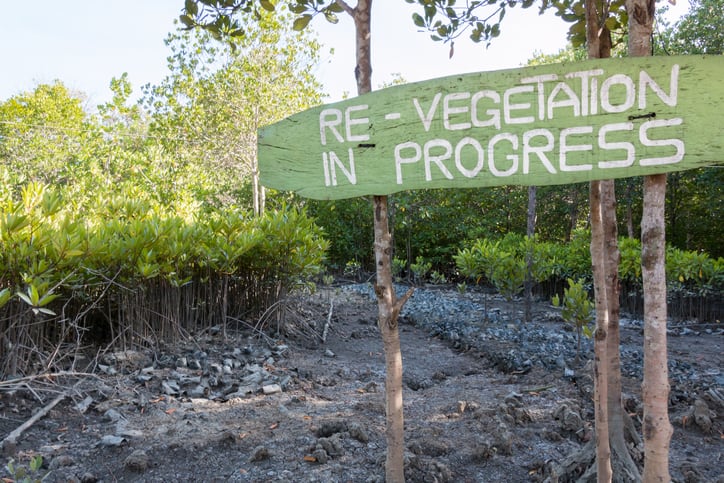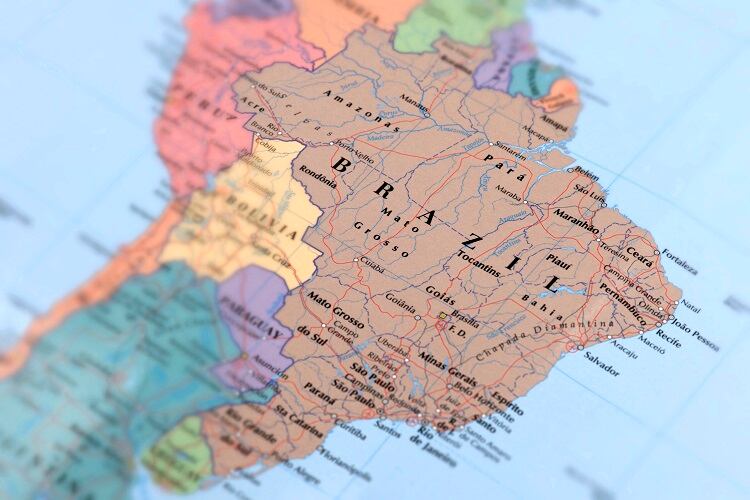Net zero or carbon neutral? It’s confusing. But both require companies, although by different extents, to use carbon offsetting to compensate for emissions they cannot remove within their own operations.
Carbon markets, however, have often faced criticism for their lack of transparency, accessibility and quality.
That’s lead to a backlash of sorts from big names in the food industry. “We are moving away from investing in carbon offsets for our brands to invest in programmes and practices that help reduce GHG emissions in our own supply-chain and operations, where it makes the most difference to reach our net zero ambition,” Nestlé told FoodNavigator. The FMCG giant plans to halve its greenhouse gas (GHG) emissions by 2030 and to achieve net zero by 2050. “Our net zero roadmap does not rely on offsets,” it continued. “We focus on GHG emissions reductions and removals within our value chain to reach our net zero ambition.”
Fast food chain Leon – whose co-founder is on a mission to lead the ‘broken’ food system into the hinterlands of environmental sustainability – will also phase out marketing claims for its ‘carbon neutral burgers’. Regulators in the UK and EU too have recently announced plans to scrutinise and police such claims more closely.
The voluntary carbon market, therefore, wants to spread the message that carbon offsets remain a key part of the race to zero.
The Integrity Council for the Voluntary Carbon Market (ICVCM), an independent governance body for the voluntary carbon market, recently released its full global benchmark for carbon offset projects. Essentially this is a list of quality standards to help suppliers choose ‘good’ carbon credits.
The standards were drawn up after a 60-day consultation period with hundreds of organizations throughout the voluntary carbon market and advice from scientific and carbon-crediting experts – all in the hope of driving up standards amid intense scrutiny of the industry.
“The past year has seen a number of companies withdraw from earlier commitments to purchase carbon credits as concerns mounted over the quality of credits on the market,” an ICVCM spokesperson told FoodNavigator.
The problem is not so much that there are no good credits out there, but rather that it is very hard for buyers to distinguish the good from the bad, the ICVCM explained. The market is made up of bilateral transactions, with little standardisation and no central exchange. This means that buyers must carry out extensive due diligence in-house and some have found that, even with their best efforts, the credits they purchased later turned out to be of lower quality than they thought. “This has reduced confidence and purchases, which ultimately means less finance for projects to reduce and remove carbon emissions,” the spokesperson told us.
The ICVCM hopes to address this problem by assessing carbon credit projects and categories of carbon credits against a range of important criteria, from emissions impact to programme governance and sustainable development impacts. This will allow credits which pass ICVCM’s assessment to use the Core Carbon Principles (CCP) label.
This certification aims to provide an independent mark of quality assurance, allowing buyers to easily identify high quality credits, no matter which sector, country or programme issued them. “It is expected that this will give buyers greater confidence and drive up both purchases and prices for high quality credits, increasing finance for impactful projects and providing incentives for developers to improve standards,” the spokesperson added.
Clearer rules of the road
ICVCM’s label has the support of other players in the voluntary carbon market as the industry ramps up its collaboration efforts in an attempt to help deliver a more standardised voluntary carbon market.
The Voluntary Carbon Markets Integrity Initiative (VCMI), for example, also recently unveiled a code of practice after a year-long consultation with multiple stakeholders. While the ICVCM helps suppliers release ‘good’ carbon credits, the VCMI helps companies make credible environmental claims based on their use of carbon credits.
The VCMI recommends that businesses purchase high-quality credits from the ICVCM. The VCMI’s Claims Code, meanwhile, is supported by a host of groups including the ICVMC, the Greenhouse Gas Protocol; the Carbon Disclosure Project; the International Emissions Trading Association (EITA); and the Science Based Targets Initiative (SBTi), which helps businesses reduce emissions in line with the Paris Agreement goals.

Annette Nazareth, Chair of the ICVCM, explained what the collaboration between the groups hopes to achieve. “VCMI’s guidance on credible claims complements the Integrity Council’s work to establish a global benchmark for high-integrity carbon credits that will give buyers confidence they are funding projects making a genuine impact on emissions,” she said. “By creating end-to-end high integrity throughout the voluntary carbon market, from the supply of credits, to the markets they trade in, and ultimately how they are used, we can unlock investment at speed and scale for climate solutions that would not otherwise be viable.”
The VCMI’s Claims Code hopes to give companies a rulebook to follow for making credible climate claims, helping to build market confidence in how they engage with voluntary carbon markets. “Without clear high integrity rules for both aspects, voluntary carbon markets will rightly continue to be viewed with suspicion, companies will be afraid to invest, and their potential will be lost,” it states.
Rachel Kyte, Co-Chair of VCMI’s Steering Committee, added: “Voluntary carbon markets bring considerable benefits as part of companies’ net-zero transition and as a means of financing climate transition worldwide. Against a backdrop of recent criticism, we are now at a juncture where only consistent, well-considered global guidance can underpin a high-quality market and stimulate the rapid scaling of corporate use we need. The Claims Code will give greater confidence and develop trust in those who use it. If you build integrity, trust will follow, and trust is the foundation of a high value, high impact market.”
Use carbon credits as ‘a contribution to global climate change mitigation efforts’
The crux of the advice is that businesses should follow a ‘climate contribution’ approach, where “carbon credits are not counted towards, nor represent compensation for, a company’s remaining value chain emissions”. In other words, use them to contribute to climate mitigation not to make claims you have cancelled, counterbalanced or netted out emissions.
This means we can expect to see more pushback against the ‘carbon neutral’ claim, a spokesperson from the SBTi told FoodNavigator. Historically, this has been the most widely used ‘achievement’ claim among businesses relating to their BVCM or ‘Beyond value chain mitigation’ efforts, where companies would typically purchase a volume of carbon credits equivalent to their unabated scope 1–3 emissions.
But there are several perspectives on when or if the term ‘carbon neutral’ can be used credibly, the spokesperson explained. One view is that when companies purchase carbon credits in an amount equal to their remaining emissions, the ‘carbon neutral’ claim can facilitate increased BVCM. Another view is that it conceals or downplays the remaining climate impact of businesses that have not fully decarbonized, and hence should not be used at all.
Because there are different meanings that can be attributed to the term, ‘carbon neutral’ therefore “may not be the most effective claim for leading companies to make to differentiate their climate mitigation actions from companies that are not decarbonizing in line with science.”
Firms ‘scared to be seen greenwashing’
Thanks to this kind of confusion “we are seeing that companies aren’t investing [in carbon credits] because of fears of greenwashing accusations,” added Scarlett Benson, Beyond Value Chain Mitigation Lead at the SBTi.
Speaking during a recent roundtable webinar event, where representatives from different voluntary carbon groups discussed the current perceptions of carbon credits, she added that the new industry frameworks will remove big barriers for companies and ultimately allow the idea of reducing the intensity of emissions to take a greater hold. “We are still pretty early on in the journey of taking on responsibility for unabated emissions as being the new bar for climate leadership,” she said. “I think we will see this market growing significantly in coming years.”
Lydia Sheldrake, Director of Policy and Partnerships at the VCMI, added: “Transparency is central… we have a scenario of companies greenhushing for fear of being accused of greenwash.” Greenhushing – where companies believe it is safer to simply not disclose details of the climate target – is “absolutely not” where we need to be, she stressed. “We need urgent action now. Clear frameworks which show what legitimate action looks like are important incentives.”
Teresa Hartman, director of the Voluntary Carbon Market Foundation IETA, agreed. “The big barrier to action right now is that it’s so controversial to use a credit. What we are trying to say is that carbon markets are a really important piece of the puzzle to get to 1.5 degrees.”



